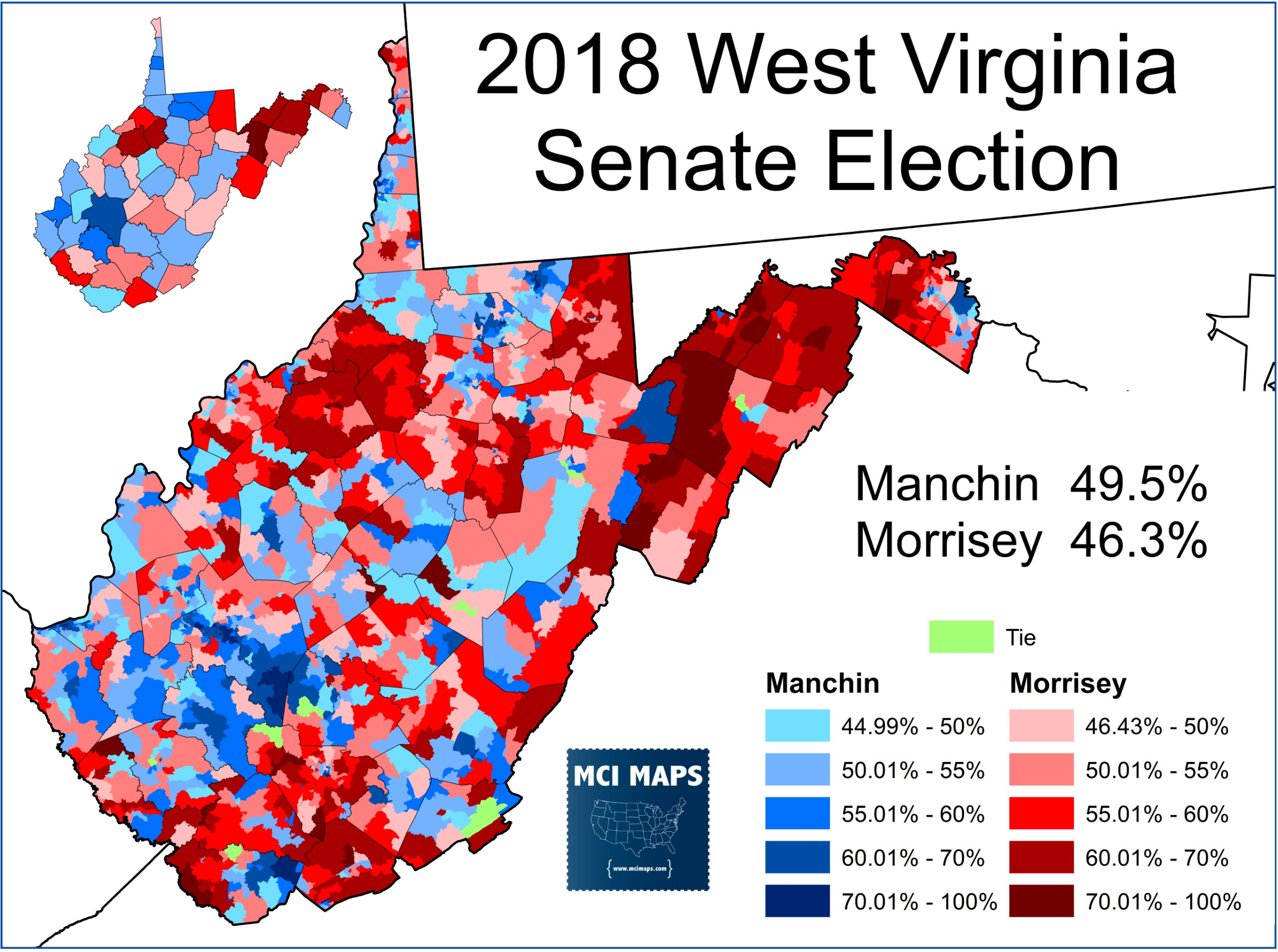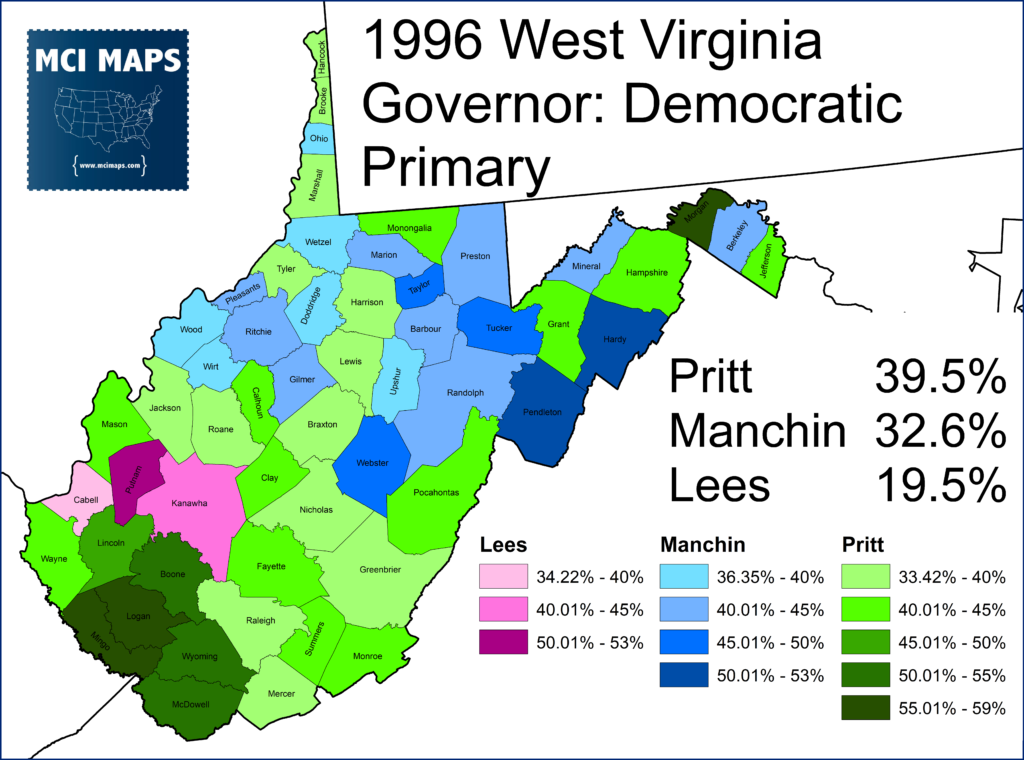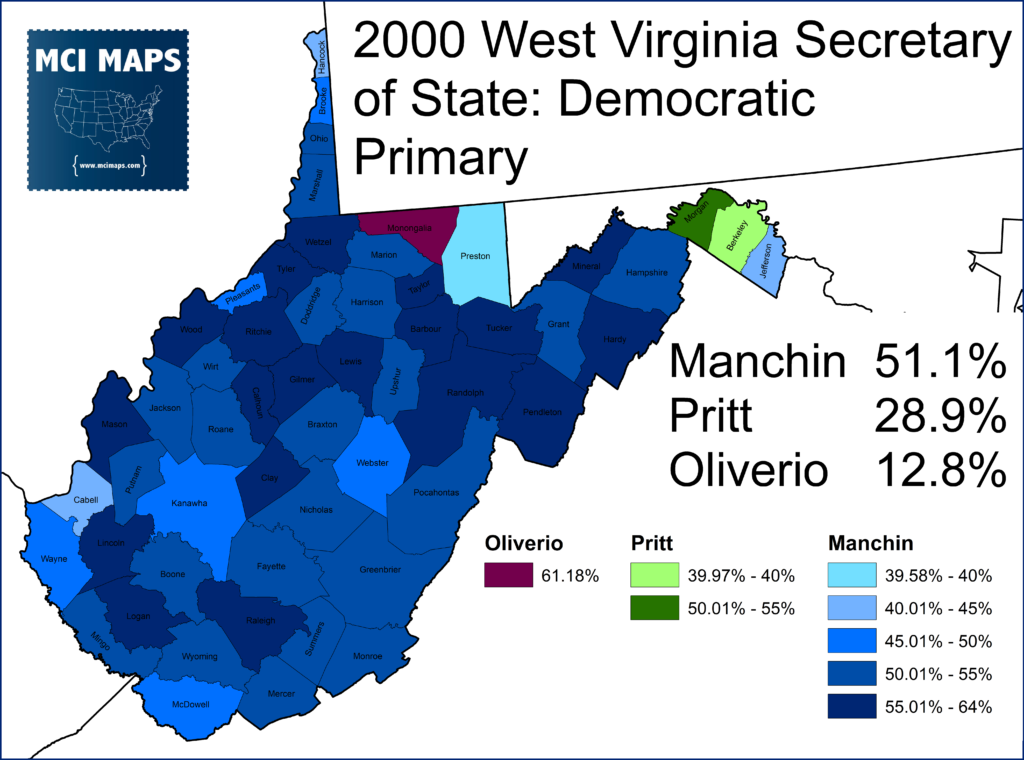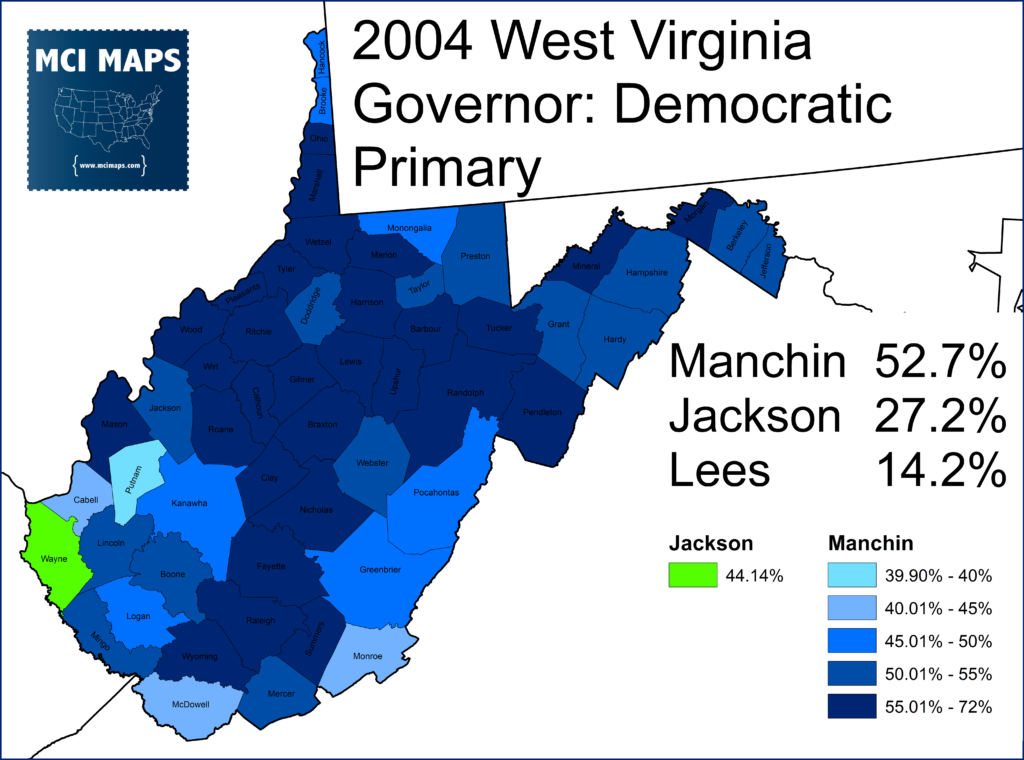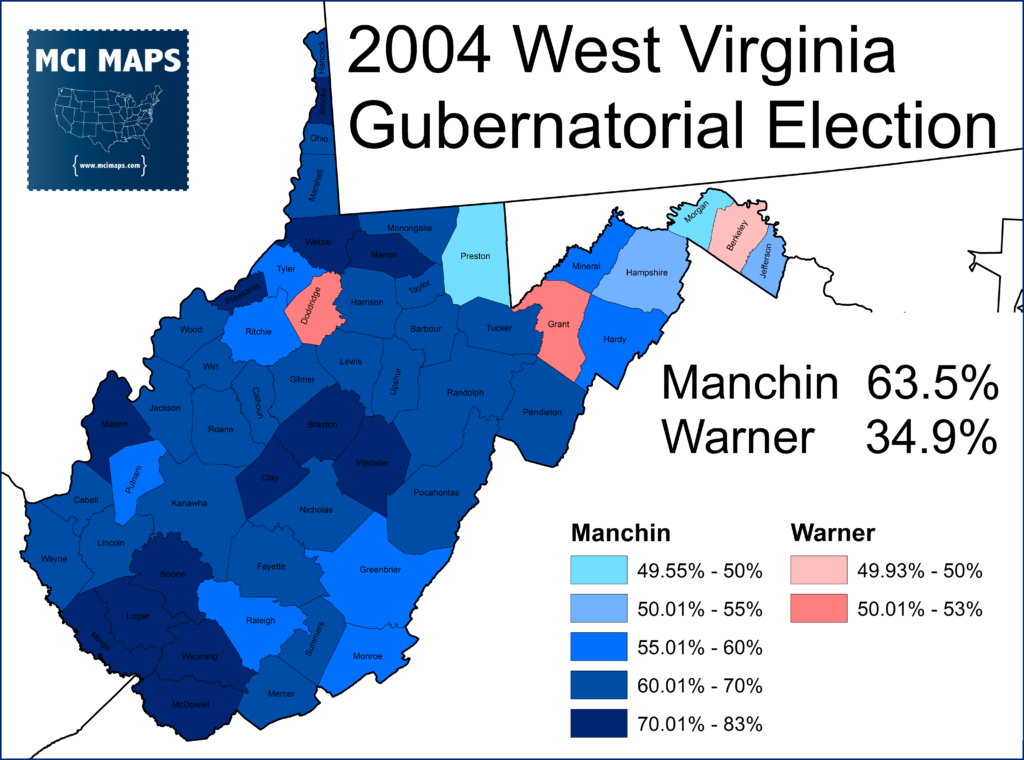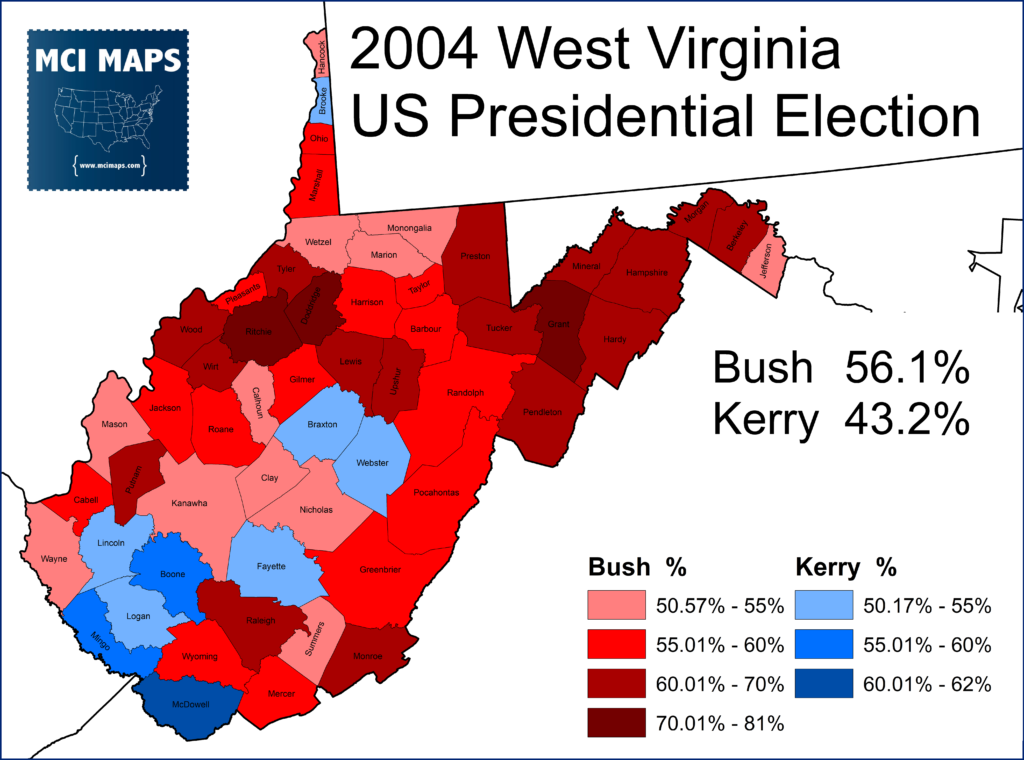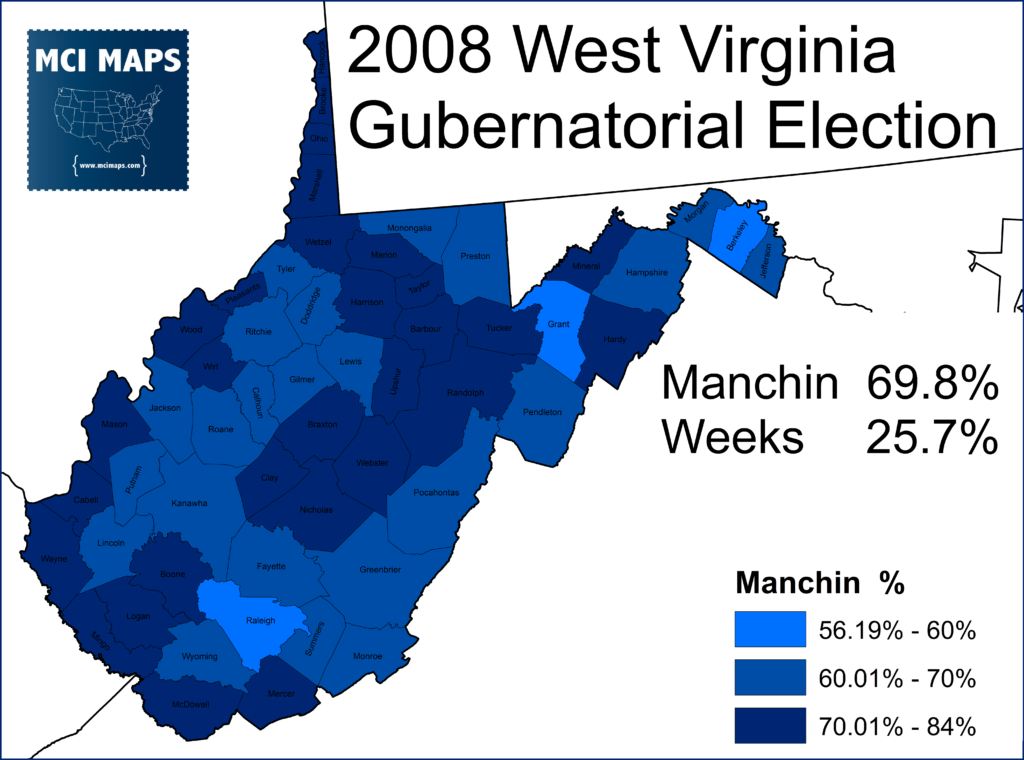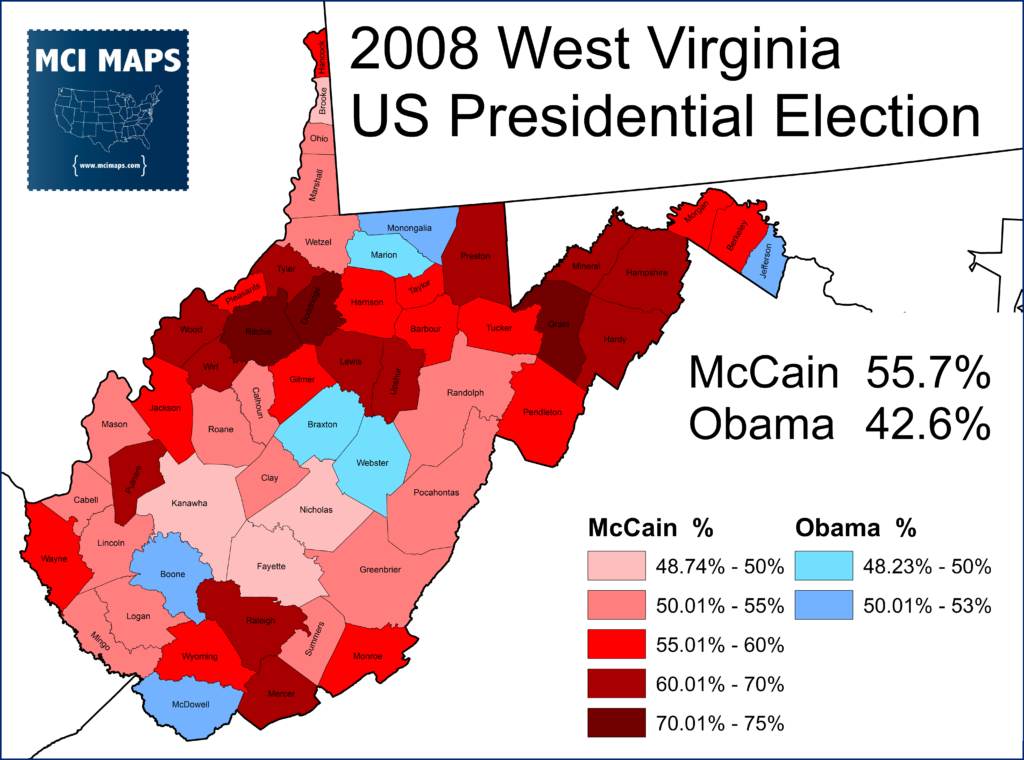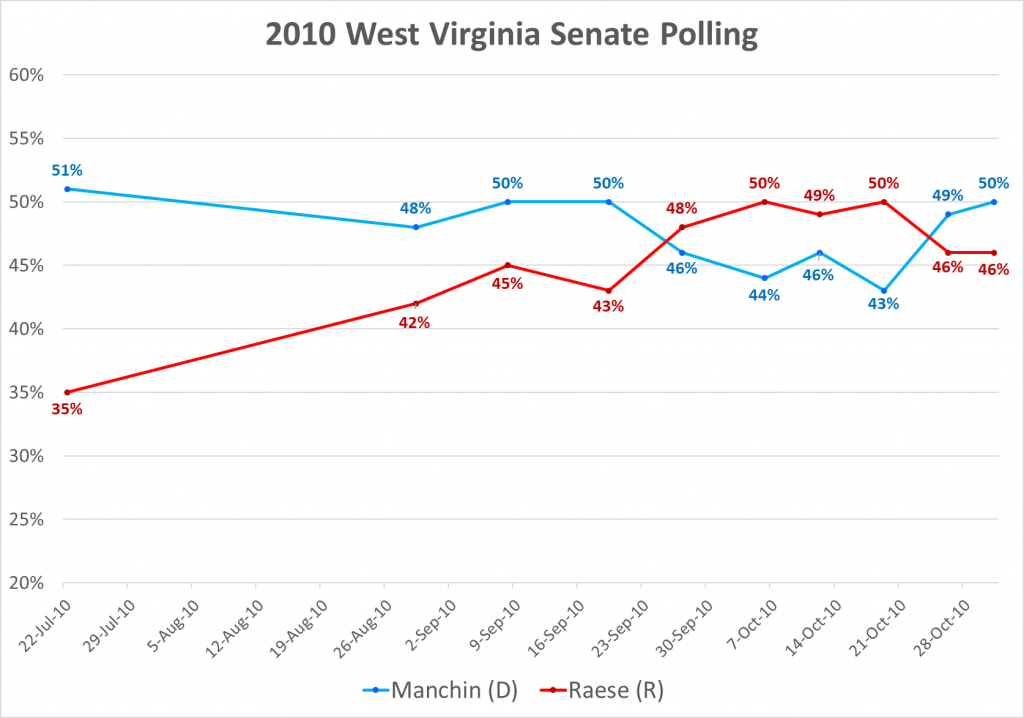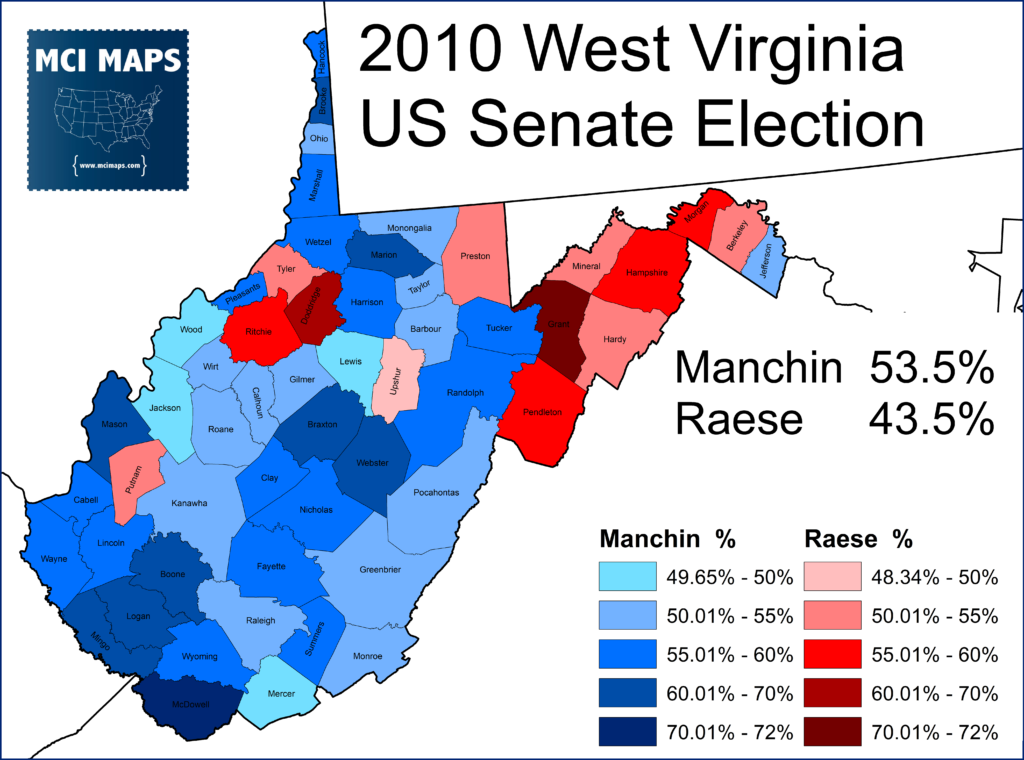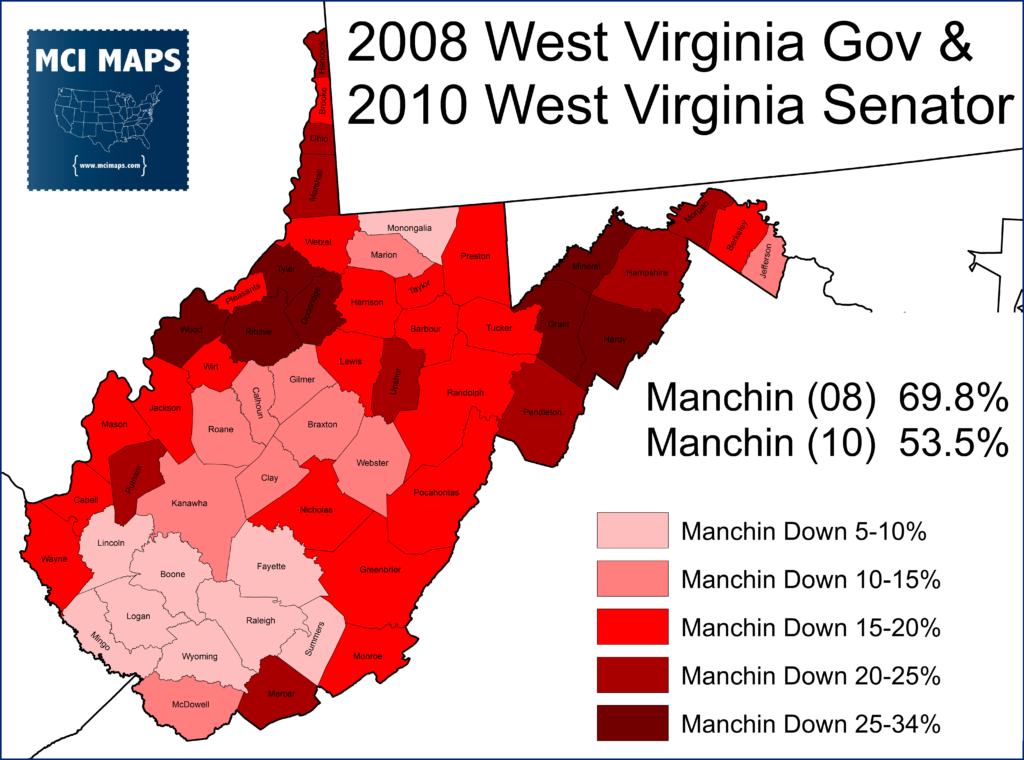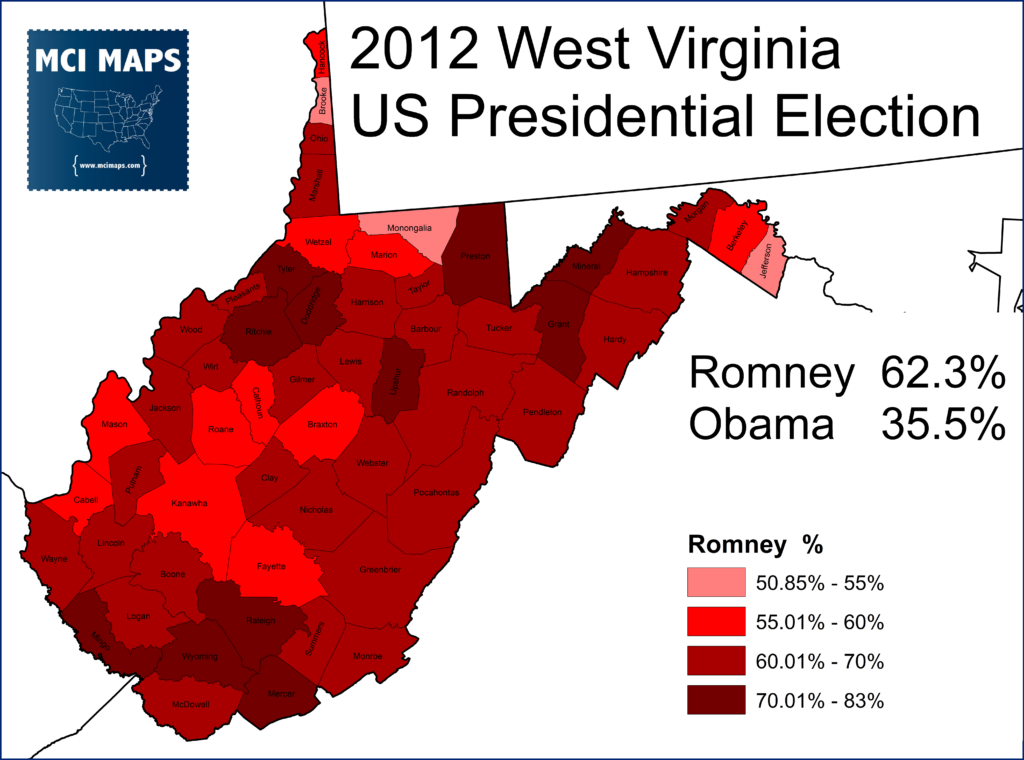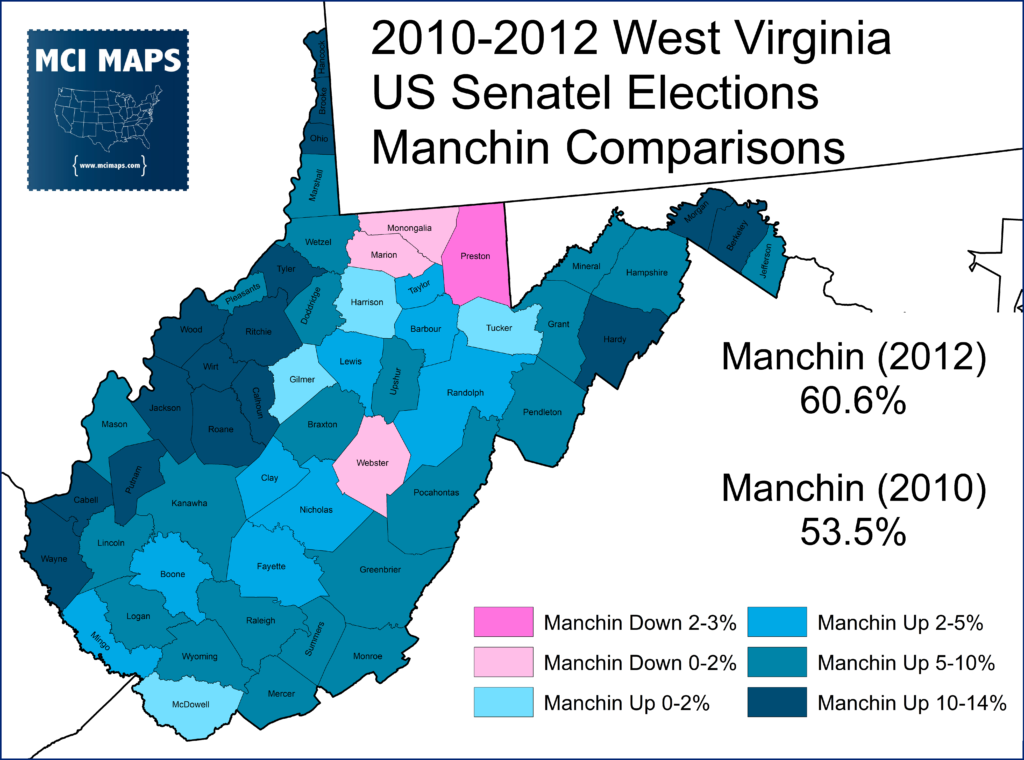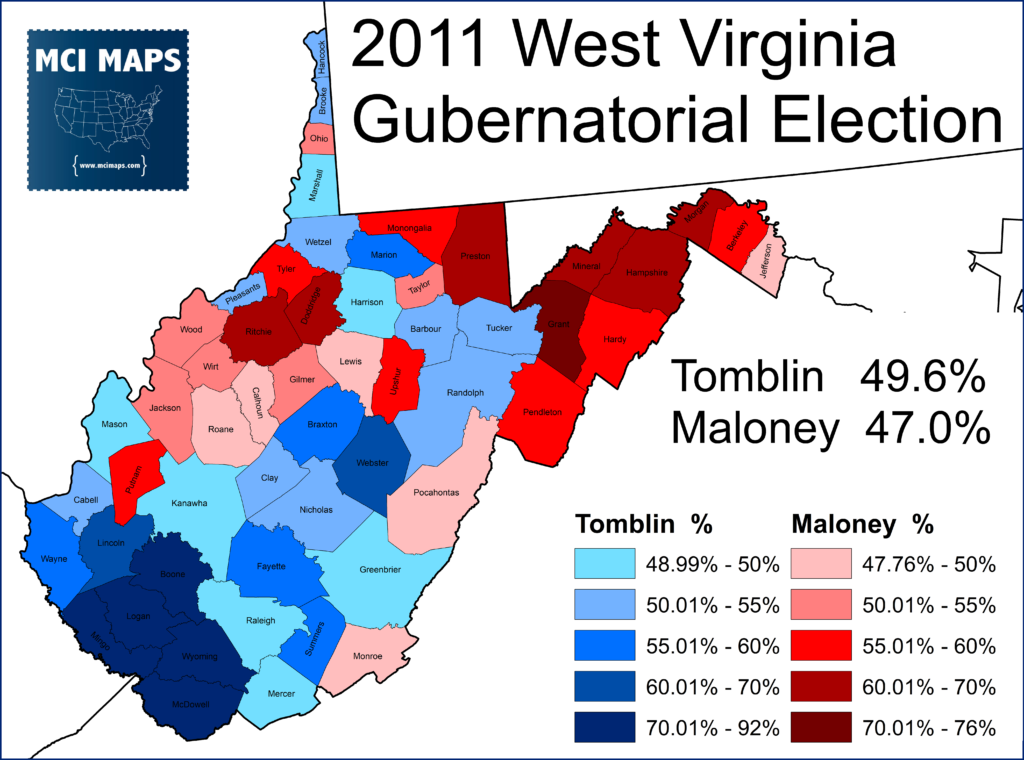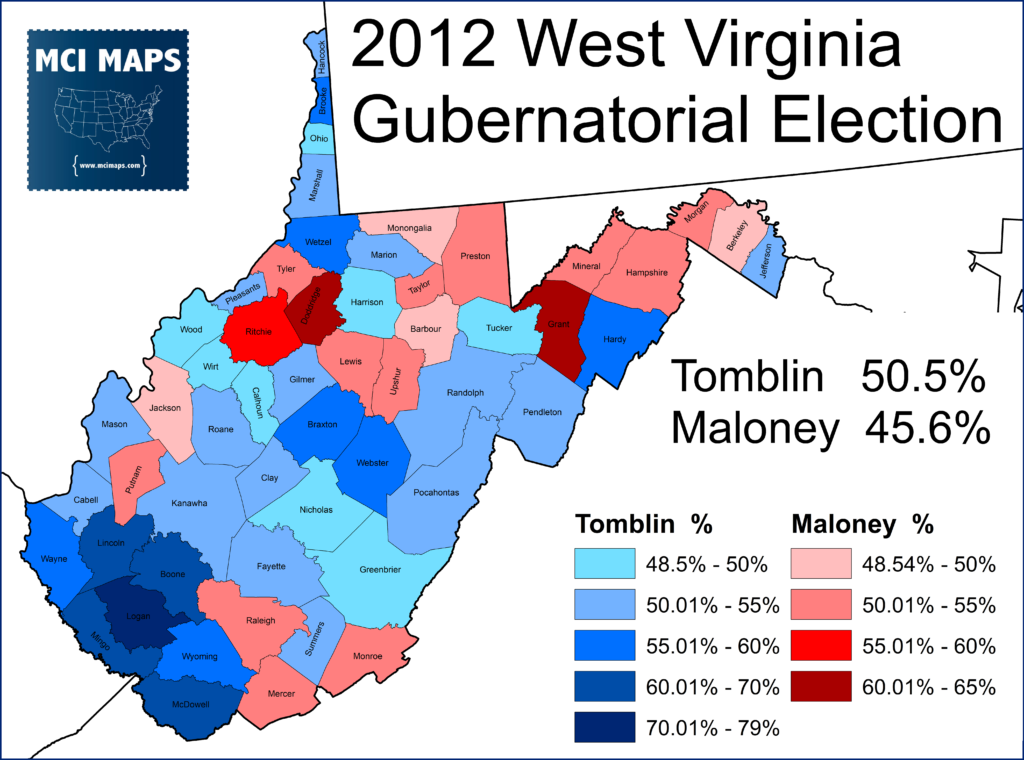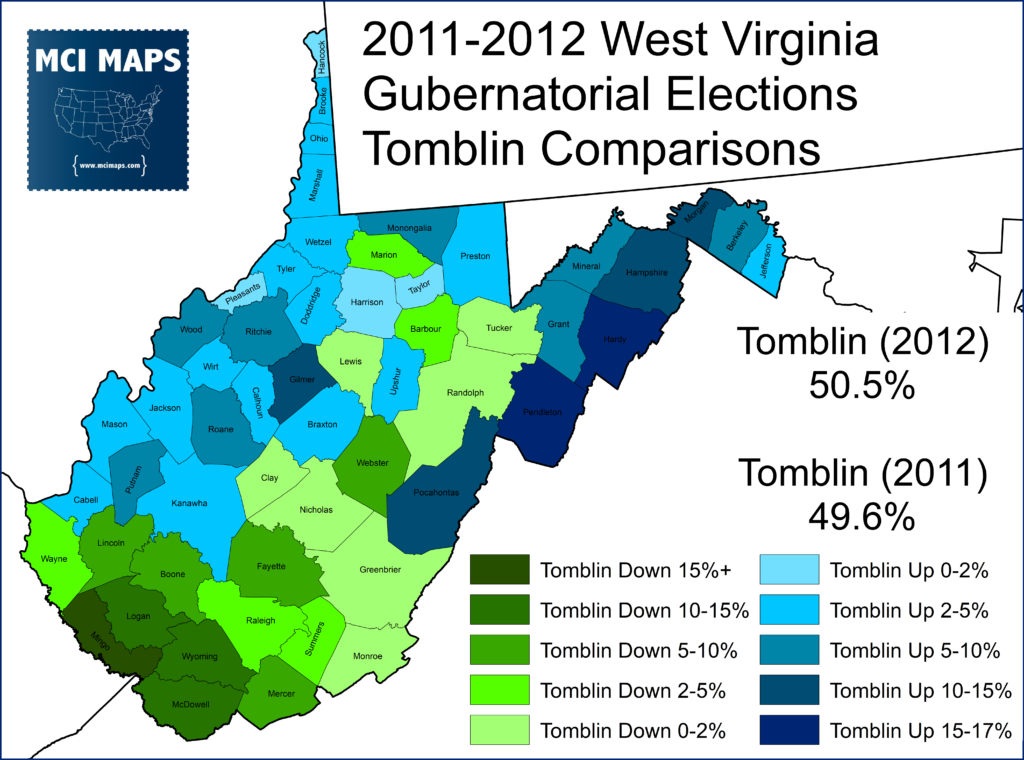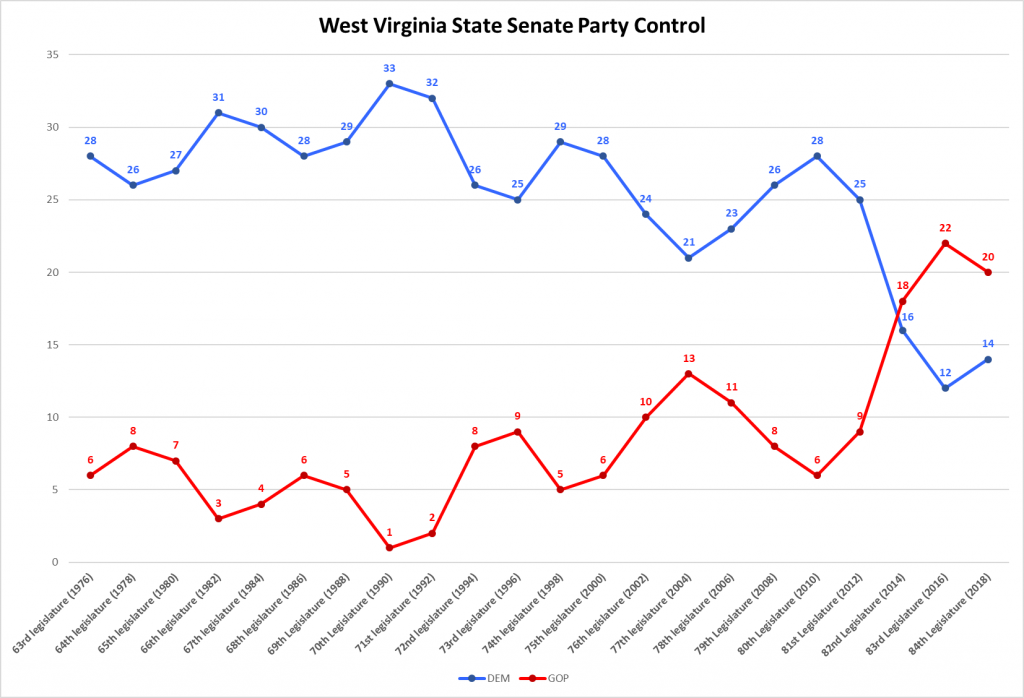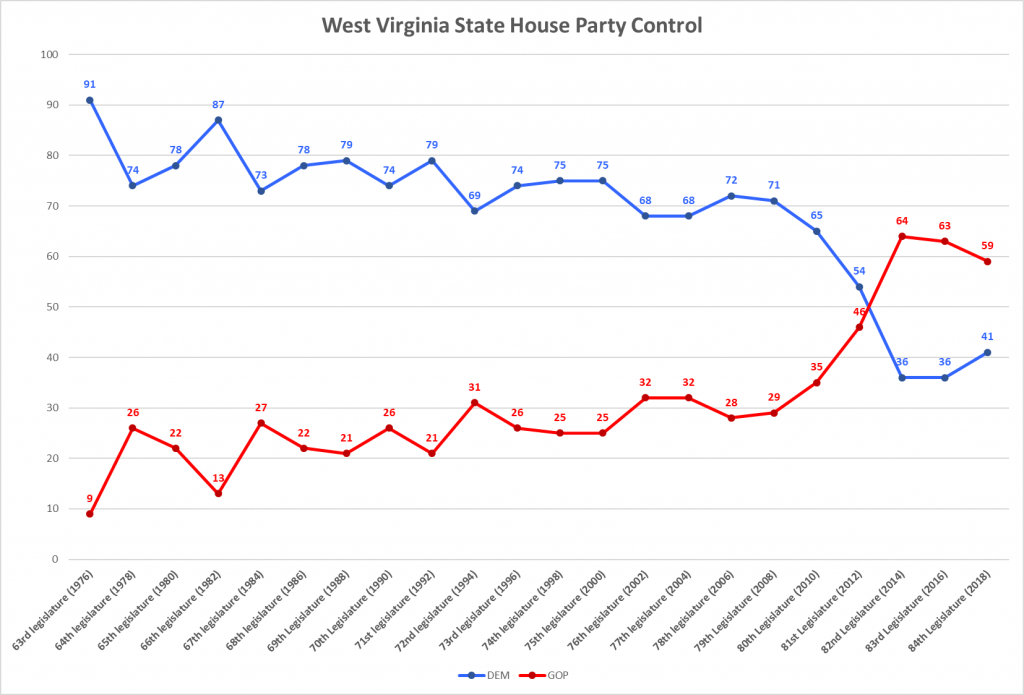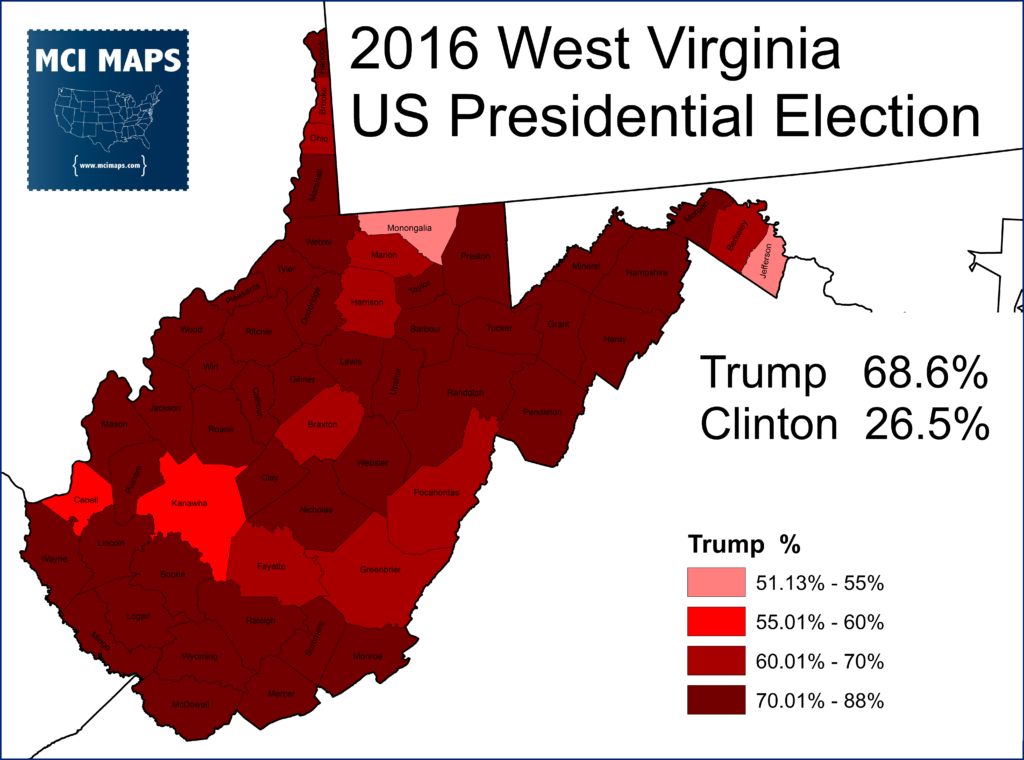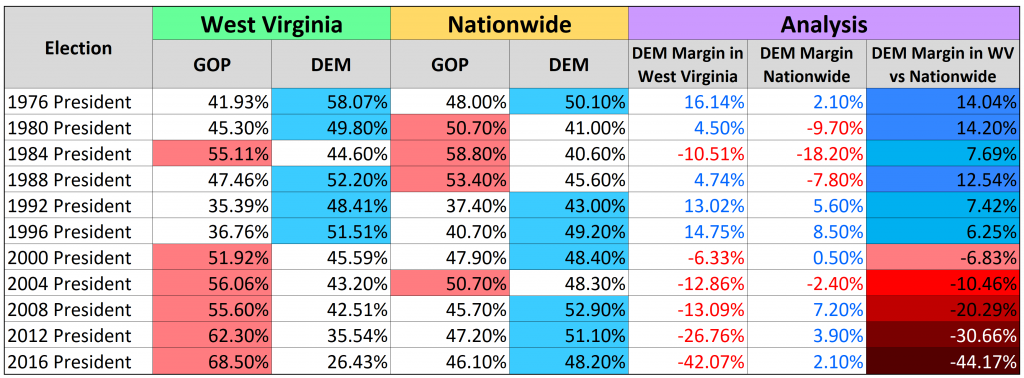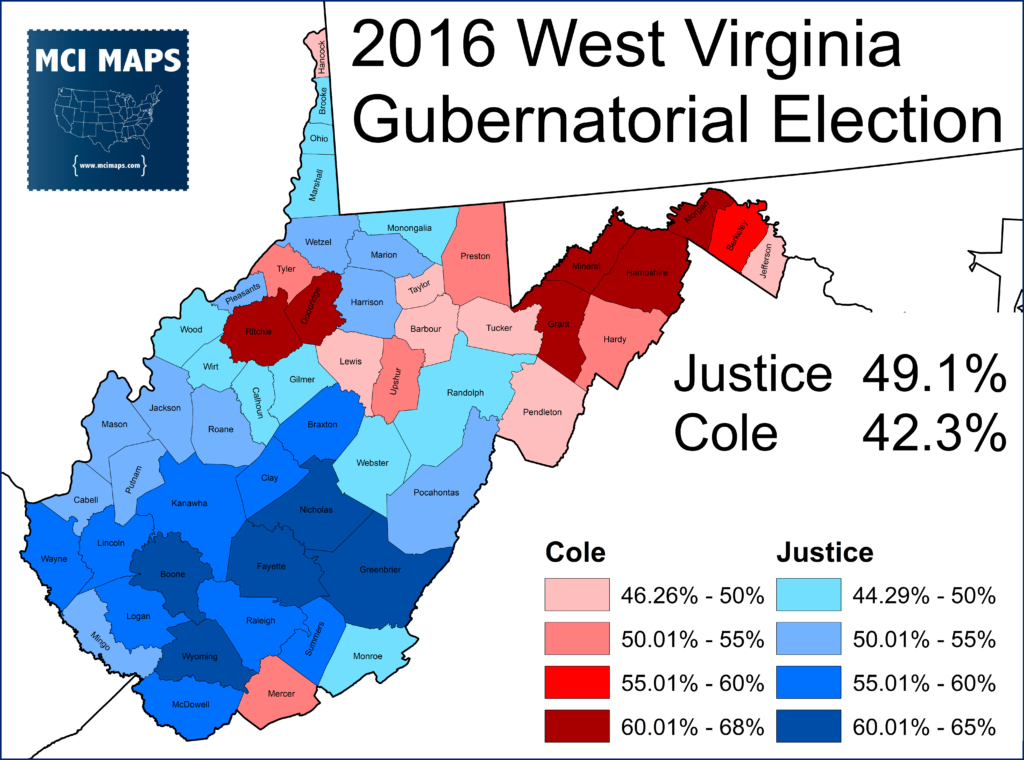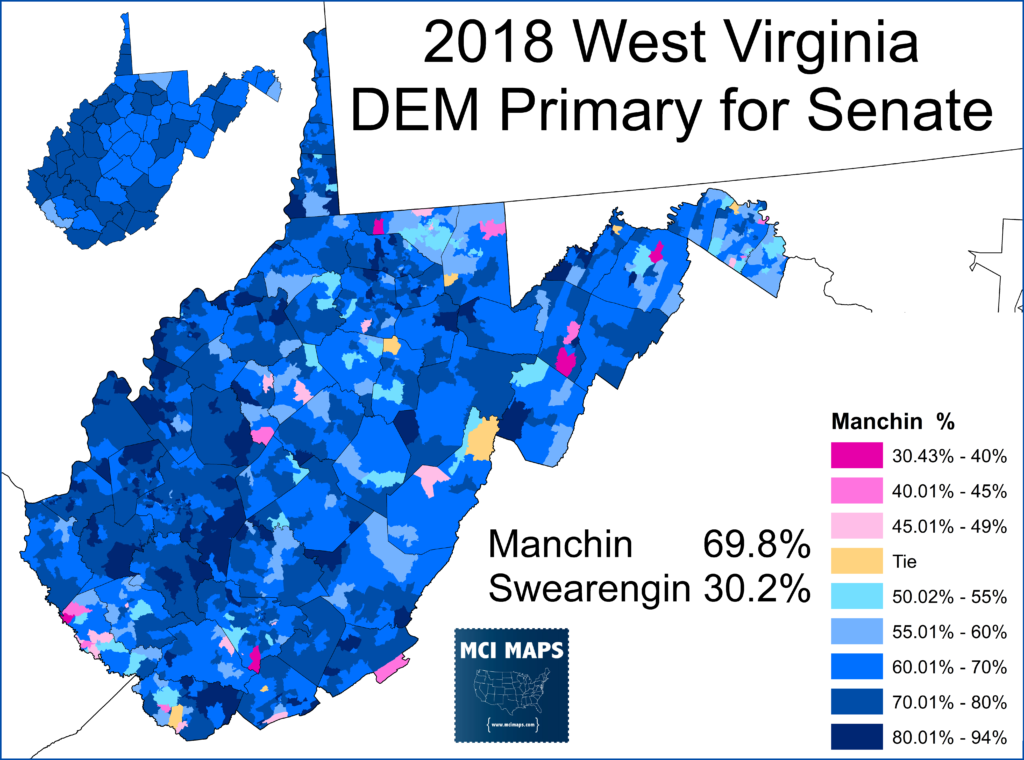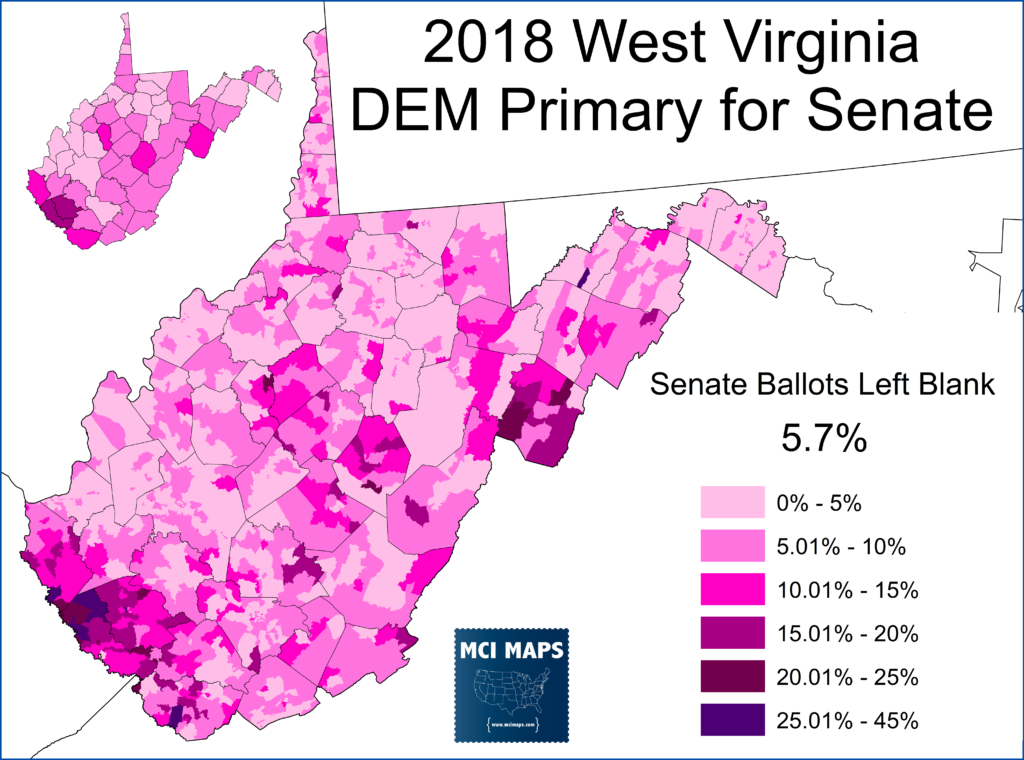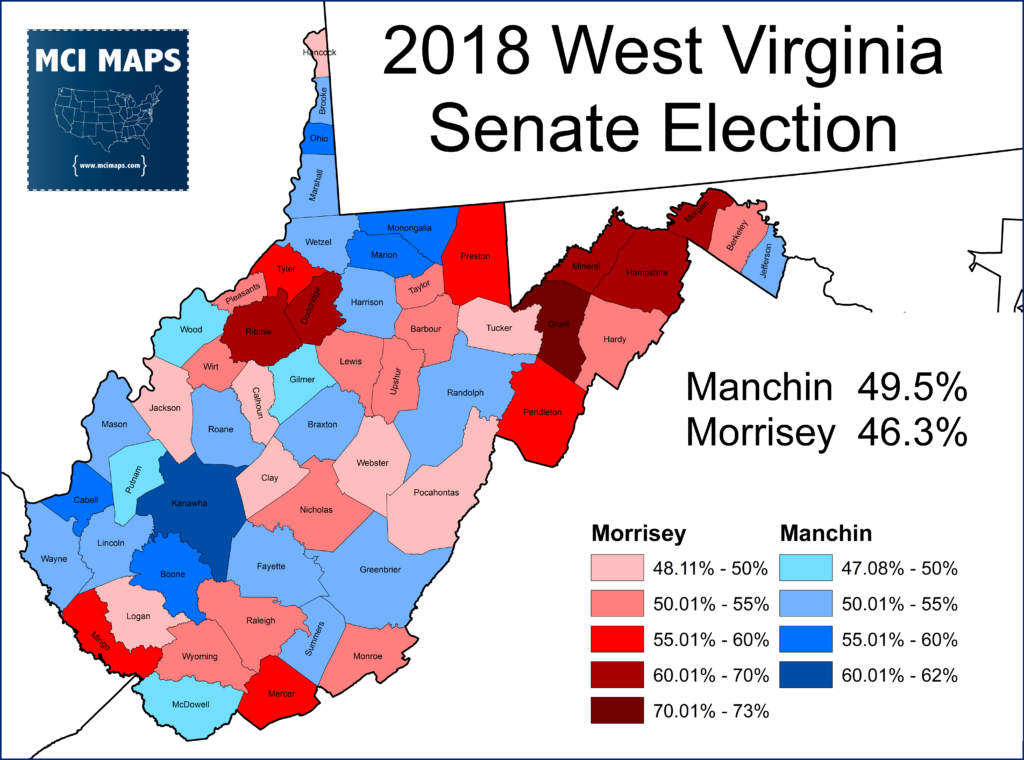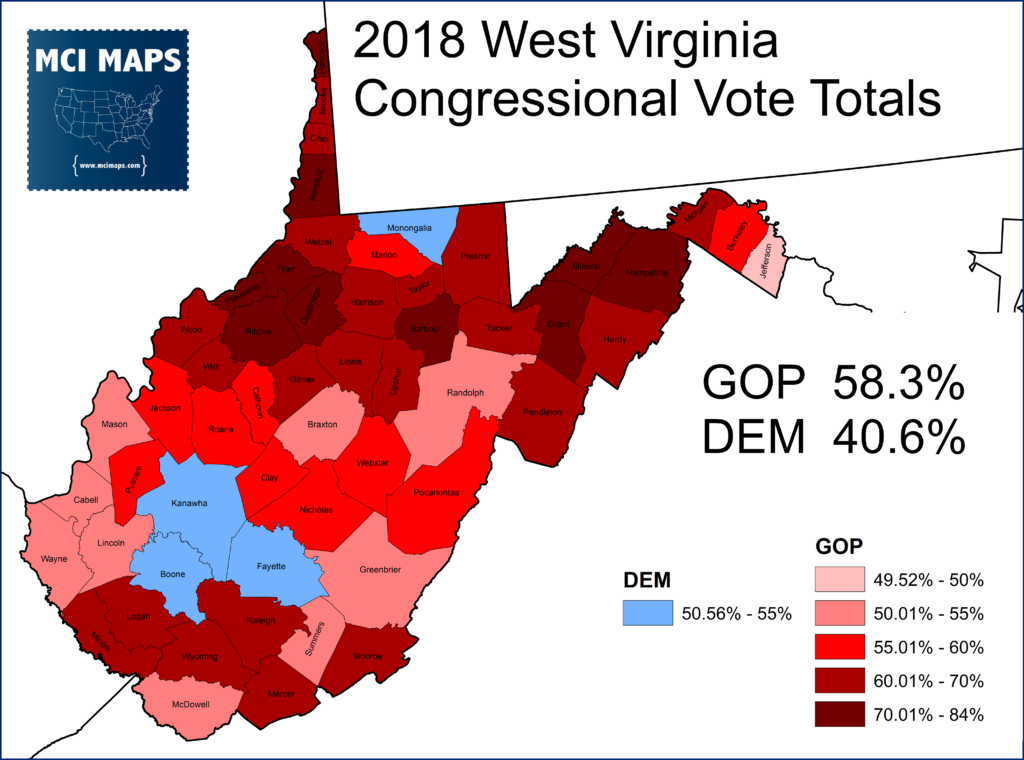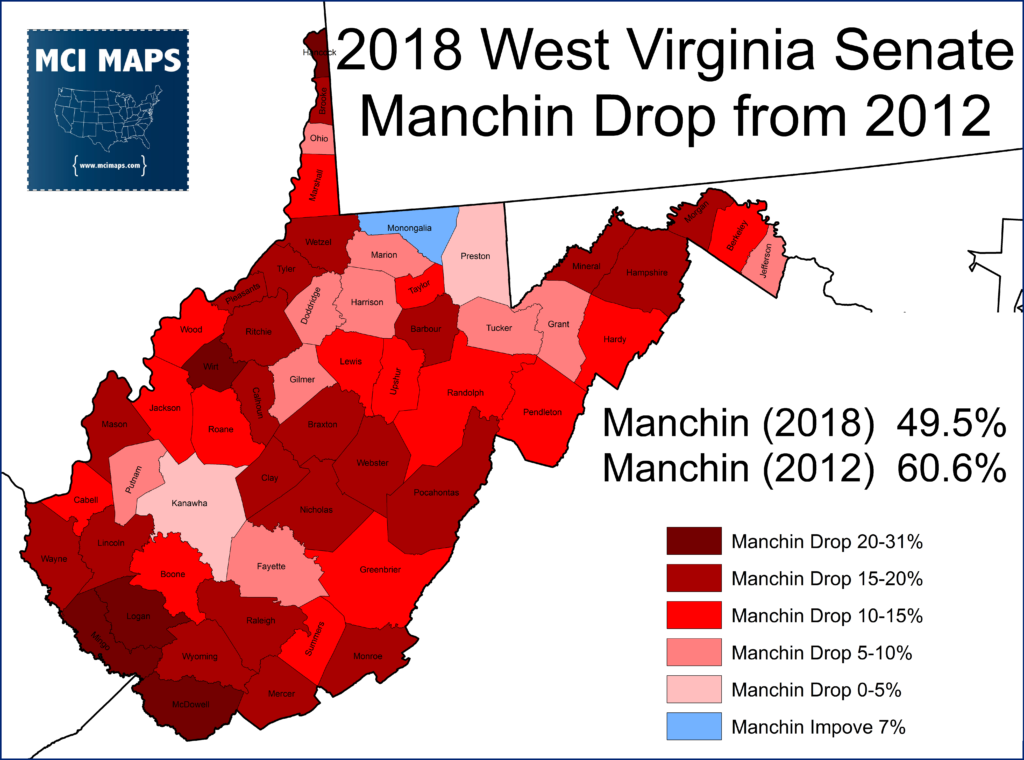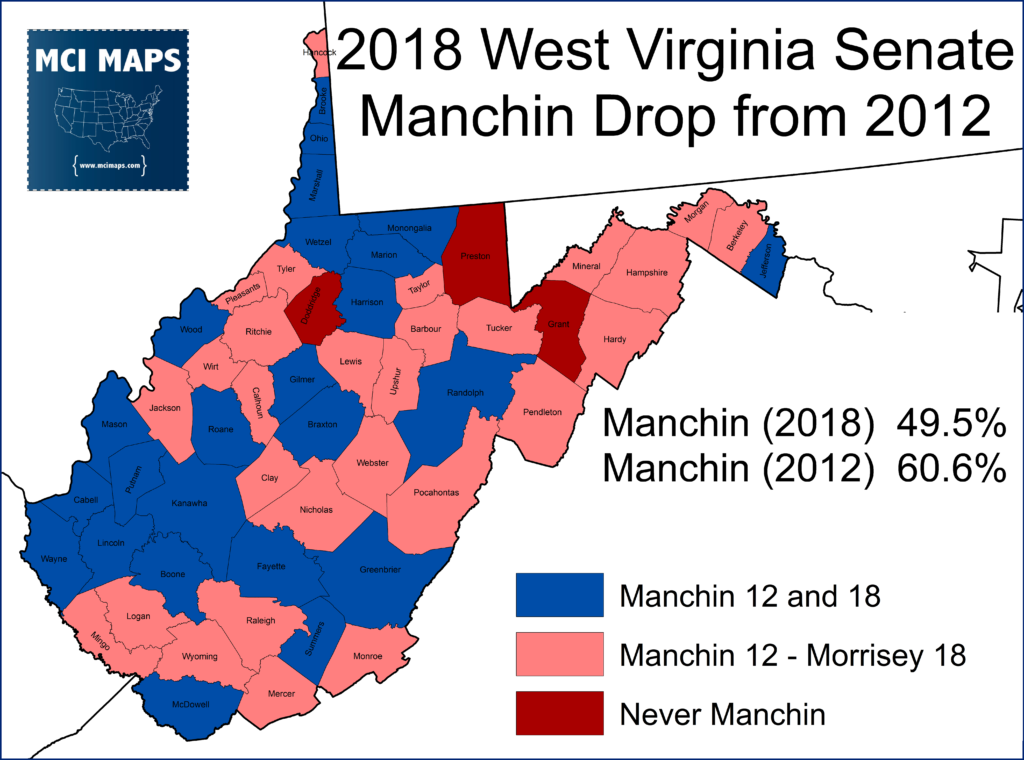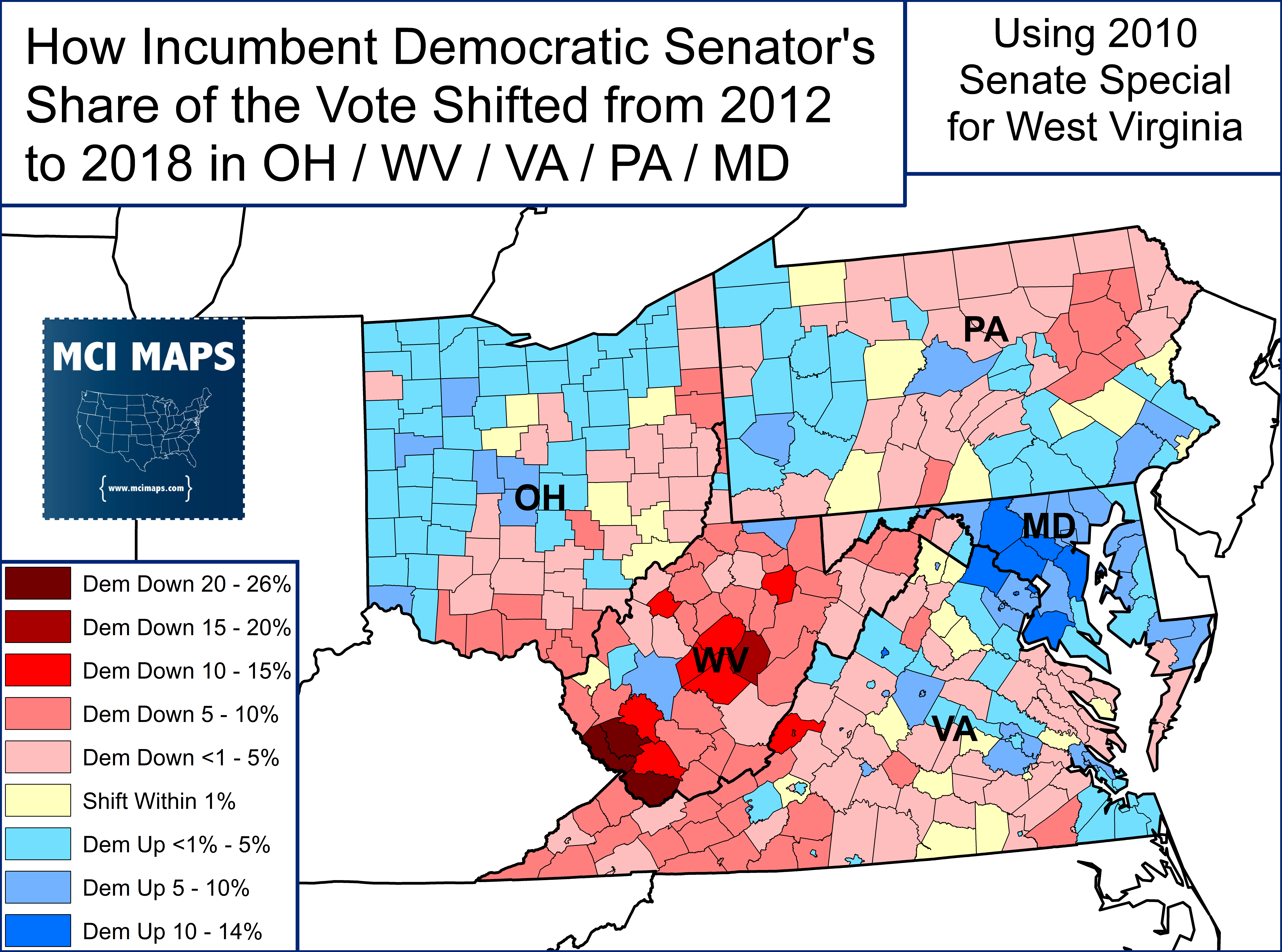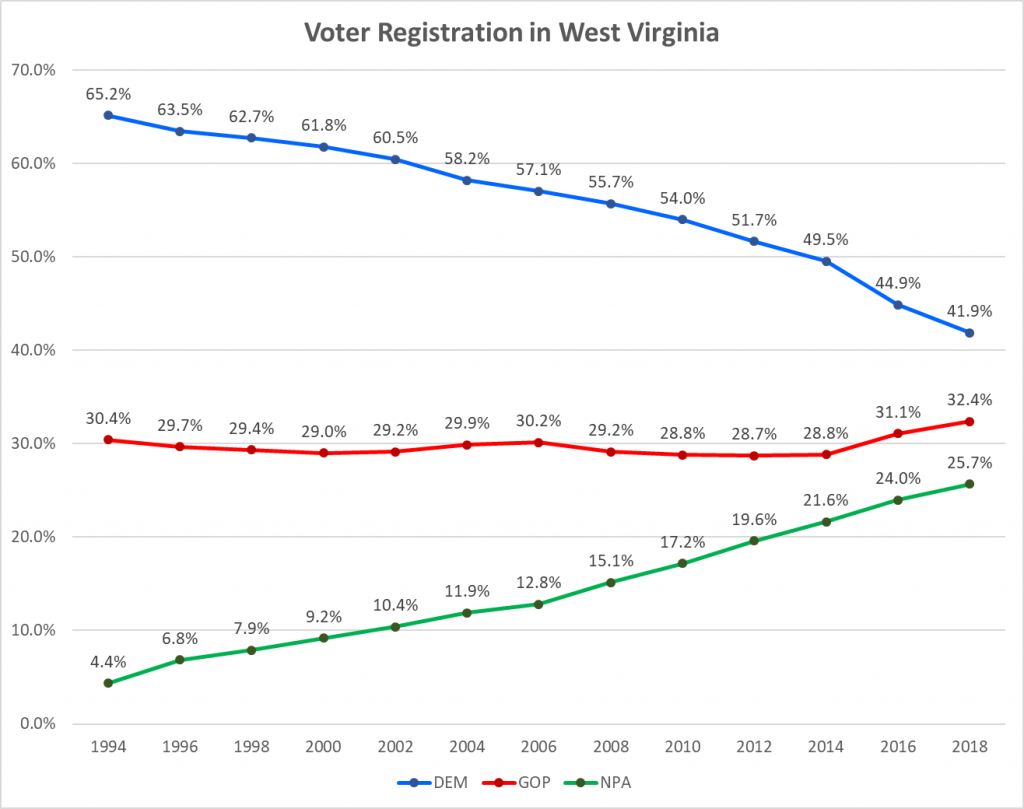Former Governor and Current US Senator Joe Manchin is without a doubt the most powerful Democrat in West Virginia. In a state rapidly shifting to the right, Manchin has managed to hang on in close elections in both 2010 and 2018. After winning re-election last year, Manchin has spent much of 2019 debating a run for Governor. Manchin would be challenging Republican Governor Jim Justice, who was elected a Democrat in 2016 but switched parties a year later. Manchin running for Governor would put his Senate seat in serious jeopardy; forcing a special election in 2022 or earlier (depending on if the legislature changes the vacancy laws).
Many/most Democratic operatives don’t want Manchin to make the run for Governor due to the concerns about his Senate seat. I am also in that camp. I also believe that despite leading Justice in polls right now, he has a serious risk of losing in 2020. To put all this in context; I feel it is best to look back at Joe Manchin’s electoral career in West Virginia and how he has navigated a state that has radically shifted under his feet.
Manchin’s Early Campaigns
Joe Manchin was elected to the state legislature in 1982; first to the state house and then to the state Senate. Manchin’s first statewide campaign featured his only statewide loss; in the 1996 Democratic primary for Governor. Manchin lost to former State Senator Charlotte Pritt; who ran under a more liberal/populist platform than most West Virginia Democrats.
Pritt made headlines in 1992 when she challenged Democratic Governor Gaston Caperton due to his opposition to collective bargaining. She dragged Caperton to a weak 8% primary win and then ran as a write-in for the general, getting 7%. These campaigns gave her the name recognition to aid in a primary win 4 years later.
Pritt’s win led to a major fracture in the Democratic primary. Her more liberal positions and clashes with the Governor in 1992 resulted in the state party not supporting her in 1996. Many democrats backed GOP nominee Cecil Underwood, a former governor, or remained quiet on the race. Pritt also made the mistake on the campaign trail of attacking Underwood’s age (implying he’d need to nap during the day). Despite leading Underwood by 22 points in the summer, she wound up losing by 6%; the same day the state easily backed Clinton for President.
Manchin came back in 2000 to run for Secretary of State. The primary was actually a rematch with Pritt; but this time he was able to easily win. Pritt had been damaged by the contentious 1996 campaign.
Manchin only faced a Libertarian candidate in the General Election, and easily won with over 70%.
Becoming Governor
Manchin opted to run for Governor in 2004 in what would originally be a primary challenged to incumbent Democrat Bob Wise; who was hurt by a scandal from an affair with a state employee. Manchin became much tighter with labor leaders in this go around and was the easy favorite in the primary. Manchin easily beat State Senator Lloyd Jackson.
The general election was a sleeper contest. Manchin easily defeated businessman Monty Warner.
The same day Manchin won, George W Bush easily took the state with 56% of the vote.
Warner tried to tie Manchin to Kerry and even challenged Manchin to back Bush in the election. Manchin reiterated his support for the Kerry/Edwards ticket.
Manchin’s re-election came during the 2008 Democratic landslides. Former State Senator Russ Weeks lost a landslide to Manchin, who won every county.
Manchin was considered one of the most popular governors in the country and Weeks was nothing more than a sacrificial lamb. The same day Manchin won re-election, McCain beat Obama with 56% of the vote.
Manchin’s successful Gubernatorial elections made him one of the most powerful Democrats in the state. Longtime Senator Robert Byrd arguably was the only one to eclipse Manchin.
Tough US Senate Campaign
In July of 2010, Senator Byrd passed away at the age of 92. Manchin said he would not appoint himself, and appointed Carte Goodwin, his legal adviser, to be a placeholder until the November special election to fill the remainder of Byrd’s term. The vacancy occurred so late into the year that originally it was believed the election wouldn’t take place till 2012. However, Manchin made it clear he wanted a special to take place in 2010 and a special law was passed to hold a special election in November of that year. Manchin was planning to run in the special, and it was believed a short campaign would make it easy for the popular Governor to sweep into the seat and be an incumbent by the time the remainder of the term was up in 2012.
Manchin easily won the Democratic primary and faced off in the general with Republican businessman John Raese. Raese was a pereniall GOP candidate who had recently lost to Robert Byrd in 2006. Early polls gave Manchin a solid 16 point lead. However, as the summer gave way to fall, and the GOP wave of 2010 became more apparent, Manchin began to see his polling lead narrow. Eventually, Raese overtook Manchin in the polls.
Manchin’s drop in the polls came despite being popular as Governor. When Public Policy Polling first showed Raese with a lead, it also gave Manchin a 59-32 approval rating. Voters worried Manchin would fall too much in line with the national party, which they very much did not like.
Manchin was forced to go even more conservative in the campaign. He generated a large amount of coverage for literally shooting the proposed Cap and Trade bill with a rifle during a TV ad. The push to the right worked and Manchin retook the lead late in the campaign. Manchin was aided by Raese being a fundamentally flawed candidate; taking positions unpopular with labor-minded voters in WV, like eliminating the minimum wage.
Manchin went on to pull off a 10 point win. His win, called early in the night, was the first major indicator Democrats would manage to hold onto the US Senate.
Manchin’s drop from his 2008 Gubernatorial win was strongest in the northern counties of the state. Manchin’s ability to hold strong margins in the coal counties of the south were instrumental in his win.
–
Subsequent Elections
Manchin may have had a close election in 2010, but history did not repeat itself in 2012. Manchin ran for a full term in the Senate and wound up for a rematch with Raese. This time Manchin’s popularity translated into more votes, especially as 2012 was seen as a less GOP-friendly year. Manchin easily won a full term.
Manchin’s win was the same day Obama took no counties in the Presidential race in the state. Manchin ran while criticizing both Romney and Obama.
Manchin overall improved his standing from 2010 in almost all counties.
Other West Virginia Democrats weren’t DOA either. After Manchin became a US Senator, Early Ray Tomblin, who was the state Senate President, became acting governor. Tomblin, who represented the coal counties in the legislature, went on to win a special election for the remainder of Manchin’s term.
The special election was a top priority for Republicans. Manchin’s close call meant Tomblin (who won a crowded primary for the nomination) could be beaten. The frontrunner was originally former Secretary of State Betty Ireland; who subsequently lost the primary to businessman Bill Maloney. Tomblin won by 2%.
Tomblin’s win was thanks to very strong margins out of the coal counties
Just one year later, Tomblin and Maloney had a rematch for a full Governor term. Tomblin managed a 5% win; the same day Manchin easily defeated Raese for the Senate seat.
Tomblin’s strength with the coal counties actually weakened between elections, but he made improvements along the Ohio border and on the eastern panhandle to more than make up for the drop.
Tomblin and Manchin’s success showed that Democrats couldn’t be counted out yet in West Virginia. However, the state would continue a rightward shift.
Further Rightward Shift
Up until 2014, West Virginia Democrats managed to keep control of the state legislature despite a batch of GOP governors and a futher rightward shift further up the ballot. However, the midterm ended all that. Both chambers fell to the GOP.
The new GOP majority made gains in 2016, and despite some backsliding in 2018, control of the chambers is still firm in GOP hands.
That same day, the GOP took Democrat Senator Jay Rockefeller’s seat after the incumbent opted to retire. The Senate race wasn’t even on the radar of national democrats and was a sure GOP pickup for the entire cycle.
In 2016, Donald Trump winning West Virginia was never in doubt. However, the state wound up giving Trump his highest vote share of the entire cycle.
On a Presidential level, West Virginia has rapidly shifted to the right of the nation. The state used to lean more Democratic than the country as a whole until the 2000 election. Since 2000, the state has gone from 6% more GOP to 44% more GOP.
West Virginia’s ticket splitting continued in 2016, however, when Democrat Jim Justice won the Gubernatorial election by 7 points.
Justice was a prominent coal CEO who essentially bought his way through the primary and general. He switched to the GOP in 2017.
The 2018 Senate Election
Joe Manchin was a prime target in 2018’s Senate elections. Despite still being popular in the state, the federal democratic party was a non-starter for many West Virginia voters. The GOP didn’t run a perennial candidate this time either; instead there was a contentious three-way primary.
The Republicans who lined up to challenged Manchin were Attorney General Patrick Morrisey, Congressman Evan Jenkins, and coal baron Don Blankenship. Manchin’s campaign recognized Jenkins, who represented the West Virginia 3rd and its coal counties, as the biggest threat. Blankenship would have been a dream for Democrats due to his role as CEO of companies that skirted mining safety and led to major disasters. The national GOP worked to make sure Blankship lost, which sparked a feud between Blankship and Mitch McConnell. In the end, Morrisey wound up winning with 35% after he consolidated enough of the 1st and 2nd district votes.
Manchin actually faced a primary challenge himself in the election. Manchin’s conservatism drew the ire of some liberal groups and they rallied around Paula Jean Swearengin, an environmental activists. The well-documented conservative nature of West Virginia democrats meant Manchin realistically had nothing to worry about. Indeed he won the primary with 70% of the vote.
PJS was strongest in the north end of the state, around West Virginia University, but also in conservative precincts where she acted as a protest vote. Manchin’s weak showing in Mingo, a very conservative county, indicated a conservative protest vote that he wound need to worry about in the fall.
The primary also saw almost 6% of Democrats leave their ballots blank for US Senate, another sign of conservative democrats unhappy with their choices.
As I wrote about right after the primary, this was a dangerous sign for Manchin that he was being seeing as too liberal by conservative democrats in the state.
Through the summer of 2018, Manchin polled strong in his re-election. However, at no point was he safe. The Senator had to navigate many thorny issues, notably the Brett Kavanaugh nomination to the Supreme Court. Manchin announced his support for the nominee once Collin’s YES vote ensured he had the votes to pass anyway. The decision was of course pure politics, as the confirmation was favored in West Virginia.
Manchin was seen as a favorite to win re-election, but his final 3% win was much narrower than many expected. Manchin actually wound up losing coal counties like Mingo/Logan for the first time in his career.
And the results by precinct. This took forever to make!
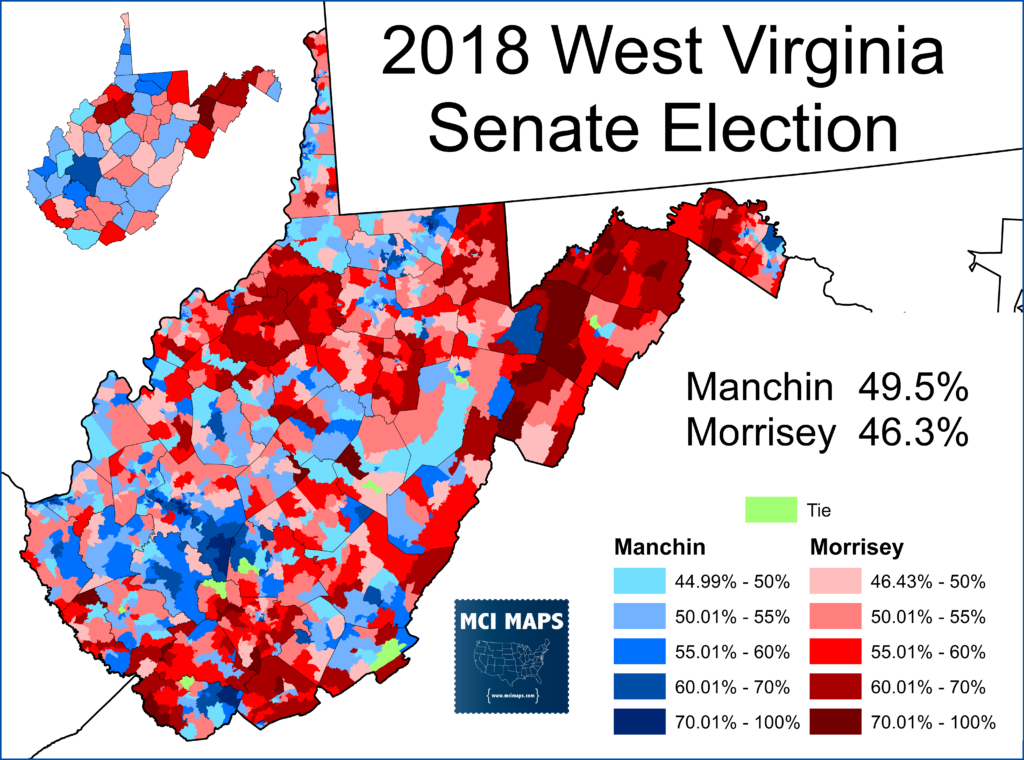
Manchin did manage to hold on as Senators Heidkamp, Donnelly, McCaskill, and Nelson lost their re-elections.
Manchin also did much better than the aggregate Congressional vote share for Democrats.
The only county were Manchin gained from his 2012 re-election was Monongalia County, which is home to West Virginia University.
Manchin lost many counties, north and south, from his 2012 win. It is still striking how many of those were from the southern coal counties – a former Democratic base for people like Manchin.
Manchin won re-election along with all the Democratic incumbents who neighbor him. Brown (OH), Casey (PA), Kaine (VA), and Cardin (MD) all won their elections as well. I mapped how all these Senators did compared to their 2012 campaigns. Manchin’s race stands out.
There is a point to be made that Manchin’s 2012 landslide makes the drop more pronounced that it would be for other Senators in the area. Therefore, I made the same map, but used Manchin’s 2010 special election as the comparison. The resulting map shows West Virginia fitting right in with the Appalachian region as an area with a steady GOP shift.
Part of the issue for Manchin is just being in a state that’s demographics dictate a GOP shift. West Virginia, Eastern Ohio, and Southwestern Virginia are all seeing the same GOP shifts. Manchin’s time in DC only erodes his Teflon status with the voters. He’s swimming against the current.
Conclusion
Joe Manchin has a decision to make when it comes to West Virginia Governor. He leads in early polls, but as past races have shown, that doesn’t make him a lock. Manchin is swimming against the tide in the state and by 2020 he will be running at the same time Trump is on the ballot.
Manchin is also sure to wind up with a GOP legislature that can override his vetoes (West Virginia doesn’t require super-majorities for overrides). Manchin should not expect a new Gubernatorial term to be as fun as his past terms.
There is no good news for West Virginia Democrats. The once Democratic state has shifted to the GOP at federal offices, seen its legislature flip, and the party’s former landslide in registration is rapidly shrinking.
Manchin will have a tough Governor election in 2020 or tough Senate election in 2024. Manchin should do the national party a favor, but also himself a favor, and avoid a bruising campaign next year. There is no good news for West Virginia Democrats right now – but for folks like Manchin, delaying their next appearance on a ballot is probably the best strategy.

